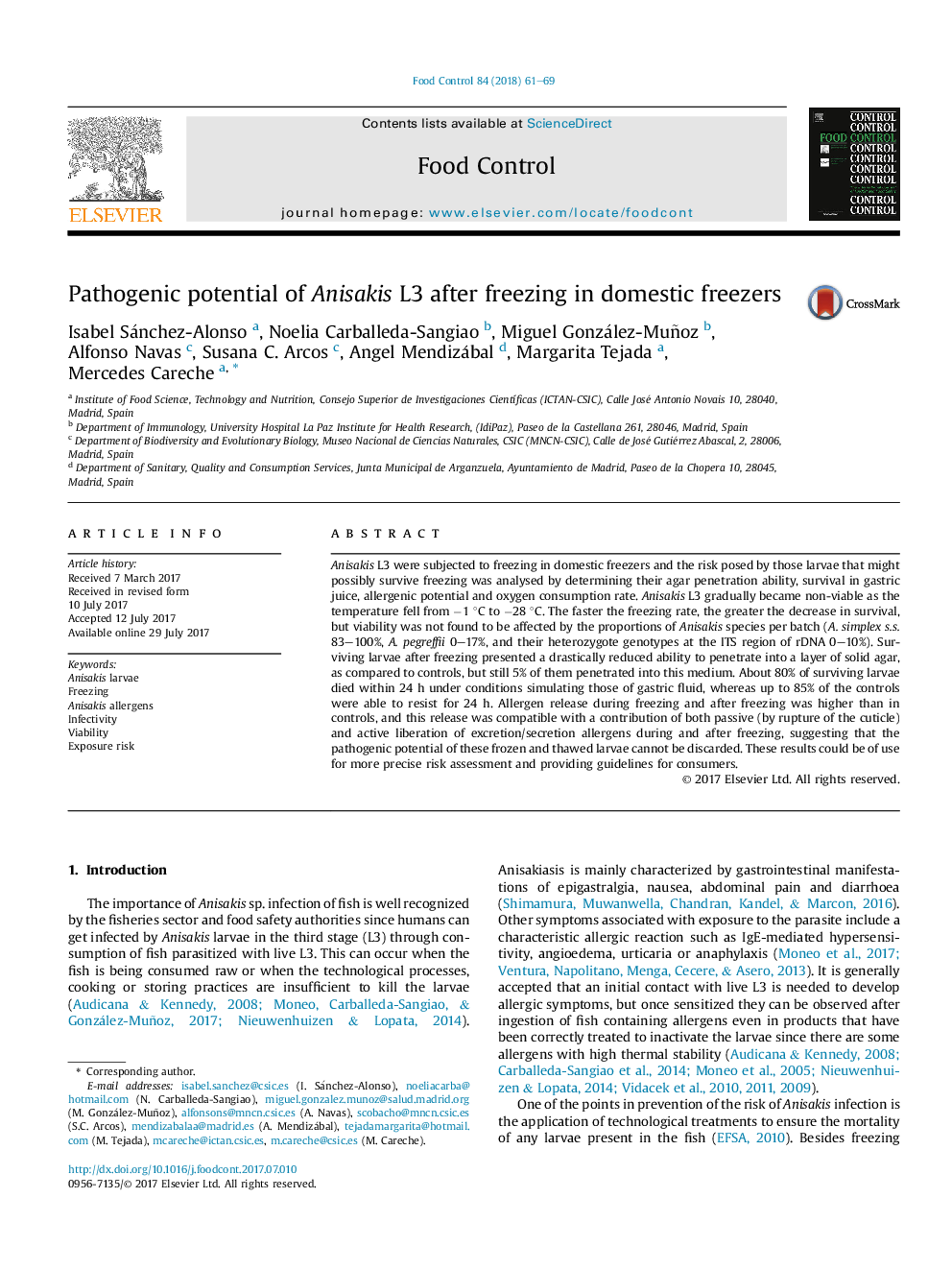| کد مقاله | کد نشریه | سال انتشار | مقاله انگلیسی | نسخه تمام متن |
|---|---|---|---|---|
| 5767287 | 1628380 | 2018 | 9 صفحه PDF | دانلود رایگان |

- Temperature inhomogeneity may account for Anisakis L3 survival in domestic freezers.
- Only 5% of the surviving L3 after freezing show agar penetration ability.
- Up to 80% of surviving L3 after freezing died in artificial gastric fluid in 24Â h.
- There was a release of Anisakis L3 allergens during and after freezing.
Anisakis L3 were subjected to freezing in domestic freezers and the risk posed by those larvae that might possibly survive freezing was analysed by determining their agar penetration ability, survival in gastric juice, allergenic potential and oxygen consumption rate. Anisakis L3 gradually became non-viable as the temperature fell from â1 °C to â28 °C. The faster the freezing rate, the greater the decrease in survival, but viability was not found to be affected by the proportions of Anisakis species per batch (A. simplex s.s. 83-100%, A. pegreffii 0-17%, and their heterozygote genotypes at the ITS region of rDNA 0-10%). Surviving larvae after freezing presented a drastically reduced ability to penetrate into a layer of solid agar, as compared to controls, but still 5% of them penetrated into this medium. About 80% of surviving larvae died within 24 h under conditions simulating those of gastric fluid, whereas up to 85% of the controls were able to resist for 24 h. Allergen release during freezing and after freezing was higher than in controls, and this release was compatible with a contribution of both passive (by rupture of the cuticle) and active liberation of excretion/secretion allergens during and after freezing, suggesting that the pathogenic potential of these frozen and thawed larvae cannot be discarded. These results could be of use for more precise risk assessment and providing guidelines for consumers.
Journal: Food Control - Volume 84, February 2018, Pages 61-69